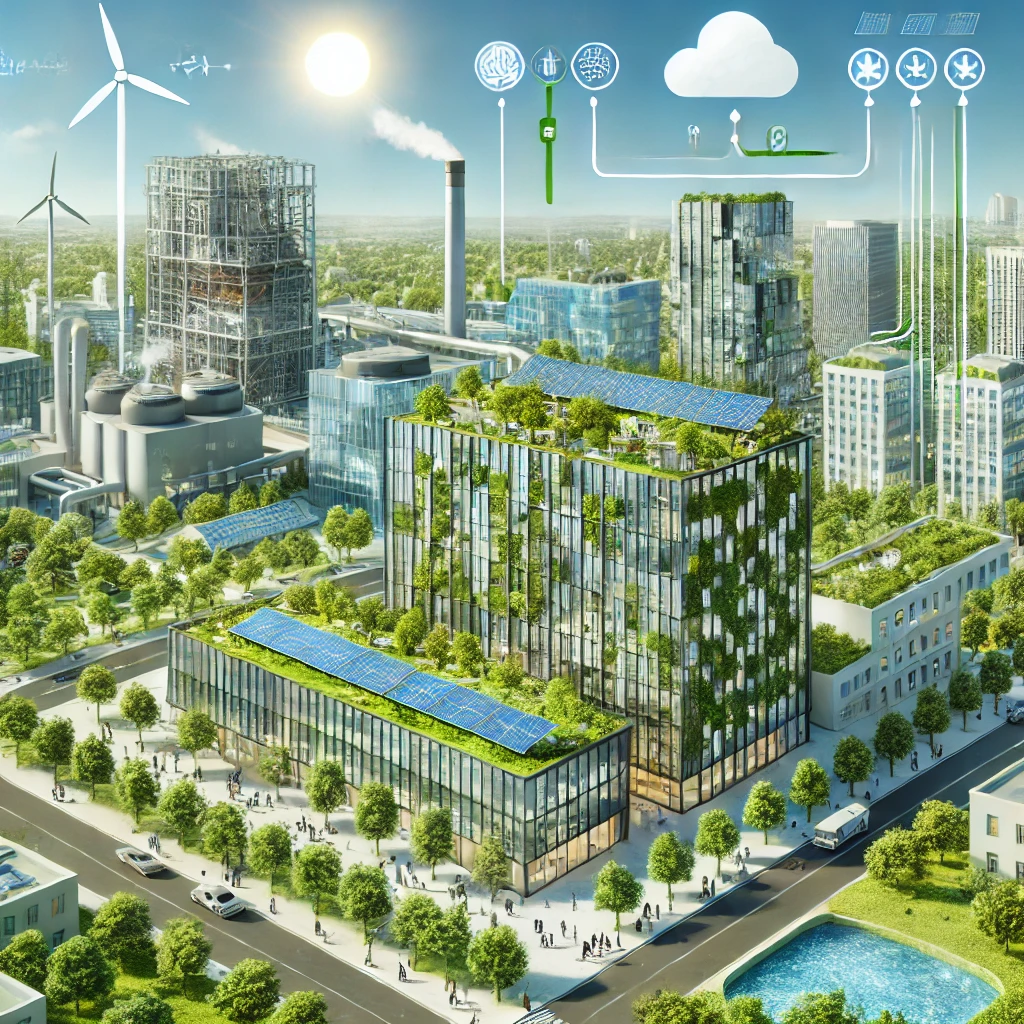Smart Cooling for a Sustainable Future: Policies and Technologies for Eco-Friendly Solutions
This study provides a comprehensive guide to sustainable cooling solutions, blending economic, social, environmental, and technological perspectives. It offers practical recommendations for policymakers and practitioners to meet the growing global cooling demand while mitigating climate change.

The global demand for cooling solutions is skyrocketing due to rising temperatures, growing populations, and increasing incomes, particularly in developing regions such as Asia and the Pacific. This surge underscores the critical role of cooling in maintaining human health, economic productivity, and the supply of essential goods like food and medicine. However, traditional cooling methods significantly contribute to greenhouse gas emissions and air pollution, creating an urgent need for sustainable alternatives. A study by Bo Shen, Dina Azhgaliyeva, and Alfredo Baño Leal from the Asian Development Bank Institute (ADBI), offers a comprehensive review of sustainable cooling technologies, policies, and financial solutions.
Understanding the Cold Economy
The study is structured into three main parts. The first part explores the context of cooling, highlighting the economic and technical challenges and opportunities. It introduces the concept of the Cold Economy, which encompasses an integrated system of cooling solutions aimed at balancing environmental sustainability with the increasing need for cooling. This section discusses the drivers of cooling demand, such as urbanization and climate change, and their impacts on health, social equality, and economic productivity. The rising temperatures and urban heat island effects, combined with higher urbanization rates, drive up the demand for air conditioning and refrigeration in various sectors. This escalating demand requires significant energy resources, with consumption tripling since 1990 and projected to triple again by 2050. This surge would strain power systems and exacerbate greenhouse gas emissions. However, cooling plays a vital role in achieving Sustainable Development Goals, including health, education, productivity, tackling inequalities, and food security.
Innovative Cooling Solutions for a Sustainable Future
The second part delves into sustainable cooling solutions, presenting various technological and design innovations. It covers passive cooling methods in building design, improvements in cooling efficiency, the use of thermal energy storage, and climate-safe refrigerants. Passive cooling strategies involve designs and technologies that reduce the need for active cooling by leveraging natural ventilation, reflective surfaces, and vegetation for shade. Improving the energy efficiency of active cooling technologies involves advanced compressor technology, variable capacity control, and efficient heat transfer. Thermal energy storage offers seasonal capability and load balancing to support grid stability, while climate-safe refrigerants transition towards environmentally friendly alternatives in line with the Montreal Protocol and its successors. District cooling systems provide centralized cooling to large areas, enhancing energy efficiency and reliability while integrating variable renewable energy sources. Digital solutions, such as big data and performance analytics, optimize cooling system performance by minimizing energy waste and providing real-time alerts and fault detection.
Policies and Financing: The Backbone of Sustainable Cooling
The third part focuses on the policies and financing necessary to promote sustainable cooling. It discusses international agreements like the Montreal Protocol and its successors, which aim to phase out ozone-depleting and high global warming potential refrigerants. The book highlights the importance of aligning national policies with these international frameworks and providing financial support to developing countries for compliance. It explores innovative financing mechanisms, such as green bonds and energy service companies, to overcome investment barriers and scale up sustainable cooling solutions. The book emphasizes that sustainable cooling is not only an environmental necessity but also a socioeconomic imperative. By improving energy efficiency, phasing out harmful refrigerants, and integrating renewable energy, sustainable cooling can contribute to climate change mitigation, enhance economic productivity, and improve public health.
A Roadmap to a Cooler, Greener Future
Throughout its three parts, the paper offers practical policy recommendations and technological insights. These include formulating and improving energy-saving policies, establishing and enhancing energy efficiency standards, labels, and certification, providing incentives, and enhancing the accessibility and affordability of financial support for manufacturers and consumers. It also highlights the importance of capacity building and training in efficient cooling technologies and services. Additionally, the book underscores the significance of public awareness and behavioral changes in promoting sustainable cooling practices. The authors argue for a multisectoral and integrated approach to address the challenges and harness the opportunities of sustainable cooling, paving the way for a more climate-friendly future.
The study is a timely and comprehensive resource addressing the urgent need for sustainable cooling solutions. It blends economic, social, environmental, and technological perspectives to provide practical guidance for transitioning to sustainable cooling systems. By balancing the growing global demand for cooling with the imperative to protect the planet, it becomes an essential read for policymakers, practitioners, and anyone committed to advancing sustainable development. By following its recommendations and insights, stakeholders can accelerate the adoption of low-carbon cooling systems, mitigate climate change, and foster a sustainable and prosperous future.
- FIRST PUBLISHED IN:
- Devdiscourse










